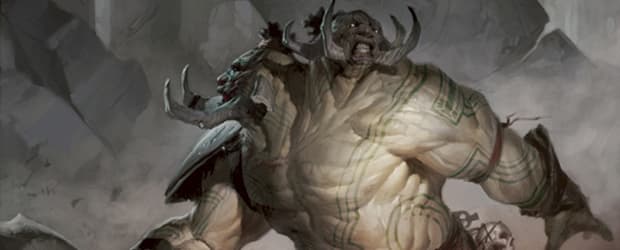I'd like to start by saying this isn't necessarily a The EPIC Storm or even a Legacy article as the information can be used on other decks or even formats. At least once a week I receive an email or message asking why I don't play "X" in my sideboard. More recently, X is equal to the card
Meltdown due to the recent potential rise of
Chalice of the Void (the Eldrazi deck hype).
I won't be addressing this question directly, but by the end of this article hopefully you'll be able to figure out why I don't play the red sorcery on your own.
Addressing Needs
When deck building, a player is often faced with a difficult question, "What match-ups am I trying to fix?" If the deck you're playing goes 50/50 with the best deck in the format, it's certainly worth considering sideboard slots to help increase those odds. I find it best to look at the most popular decks in the desired format
(I try to limit myself to five) and then address what my deck can do to improve in those match-ups. This typically leads to looking at cards until I find specific cards that fit the bill for what I'm trying to accomplish – we're done now, right?
For example:
I'm having trouble with red decks, I should be playing Circle of Protection: Red.
Well, that's certainly an option. But is it the best one? Probably not. The reason being is that it's incredibly narrow. It does what we need it to, but it doesn't have too many applications outside of mono-red decks. We should be defining what kind of red decks are we talking about! It turns out that Burn is the target here and we're playing Stoneblade, now that's settled – let's discuss some other options:
Some of these are clearly more playable than others in the Legacy format and some are just as narrow as Circle of Protection: Red. From this, we'll eliminate Kor Firewalker, Arashin Cleric and Flash Freeze. Surge of Righteousness is very similar to Celestial Purge for the sake of what we're looking for, the two life is certainly awesome too. It seems like for the purposes of beating Burn, we have a winner. However, it's actually not more versatile. For the sake of versatility, Stoneblade would actually prefer Celestial Purge as it can exile Planeswalkers - specifically
Liliana of the Veil!
Hydroblast and Blue Elemental Blast are almost interchangeable but have slight Legacy nuances which isn't the point of this article, for our purposes
Hydroblast is what we'll use. The last card is
Leyline of Sanctity, which is terrific if you're looking to defeat Burn AND targeting
(most likely discard strategies like Jund). That said, Jund has answers to Enchantments (
Golgari Charm and
Maelstrom Pulse), but the real downside is that it doesn't interact with
Liliana of the Veil.
Alright, so we're down to two cards - both of them are playable in my opinion. We really only have two slots and we're looking to hit as many match-ups as possible.
Hydroblast:
- Burn
- UR Delver
- Grixis Delver
- Sneak & Show
- Storm / Belcher
- Blood Moon Decks
- Goblins
It would appear that
Hydroblast is the more versatile card, is it the most effective card? Certainly not. But I would rather have a card like
Hydroblast that can be used in several match-ups than a card like Circle of Protection: Red that is really only useful in one. It's all about probability and hedging the most match-ups you can above the 50/50 Mendoza line. Sometimes it's important to take a step back and realize the probability that you face the burn deck in comparison to the other six to seven decks in the room. The odds are that it's not very likely. Not to mention, the odds of drawing the Circle of Protection: Red in a post-sideboard game and have it being meaningful after a likely game-one loss. It just doesn't seem worthwhile to me.
It's important to consider interactions with your main deck.
For example:
I need graveyard hate and there's a lot of Elves in my local metagame. I'll play Grafdigger's Cage.
Well, unfortunately for us we're playing Stoneblade with
Snapcaster Mage in our deck - four of them to be exact.
Grafdigger's Cage shuts down flashback which renders our
Snapcaster Mage useless. Instead of playing
Grafdigger's Cage or even
Rest in Peace which are both terrible with our wizard friend, perhaps we could try something like Surgical Extraction. A card that doesn't hurt our own cards and even has synergy with them! Granted, it doesn't stop Elves, but sideboards aren't meant to be looked at as fifteen individual cards but as a whole. Consider Zealous Persecution, which would be good against Elves, but also Death & Taxes and tokens from
Young Pyromancer or
Empty the Warrens. Sideboard slots are often give-and-take in their functionalities and percentages of usefulness.
Something I often try to do is "gain sideboard slots" by shoving other things that are playable enough into my main deck. Such as the sideboard
Bayou in The EPIC Storm or
Maelstrom Pulse in Jund, cards that don't seem out of place and have game one applications while helping find room for that sixty sixtieth card we all wanted to play very badly. It's not an exact science, but it's something to consider, sometimes your sixteenth sideboard slot is the sixtieth card of your main deck.
Exceptions to the rule
Obviously there's exceptions, one of these is toolbox strategies such as Imperial Recruiter,
Green Sun's Zenith, Enlightened Tutor and the entire cycle of Wish cards from the set Judgment. That said, the same rules apply to these cards about probably and variance.
For example:
I need something to answer Umezawa's Jitte in Elves! I'll play Reclamation Sage.
This works because as a singleton, it's a catch-all and has applications in a bunch of match-ups while even attacking. In the sideboard most Elves lists have a set of
Abrupt Decay to help support this. You'll notice that they aren't playing Oxidize to deal with
Umezawa's Jitte even though it is the most effective card for the job - it's just not practical.
The exception would be if they were to play something like
Ruric Thar, The Unbowed, where it's game-winning in some match-ups
(Storm for example) and just good enough against some decks such as Miracles. A 6/6 with double Lava Spike when answered can be good anytime!
An entirely different thing to consider is building your deck for local or smaller events -
Metagaming for 8-20 people. It's a lot more acceptable to play things like Circle of Protection: Red or Chill if you know there will be two Burn players in your 16 person event, the probability goes way up. It's important to build for your play experience, that said, I don't think it's appropriate to post deck lists saying, "this is what I play" without the context of why you have weird sideboard choices.
Another exception would be formats with a limited pool of cards such as Standard, since their are less optimal decks to be playing. I would still try to play the most versatile card I could,
(currently that card in standard for me is Self-Inflicted Wound) while having a high-impact. But I couldn't fault anymore for running very specific cards for a match-up as they're a lot more likely to see it than in Legacy.
Acceptance
Sometimes I think it's equally important to accept that it's not worth the effort to try to win certain match-ups. Goblins against Storm comes to mind, I've had opponents side in
Thalia, Guardian of Thraben and Mind Break Trap against me and still lose after losing game one. It's not worth the sideboard space, instead of trying to fix a match-up that is 30/70 or even worse concentrate on close matches. This will help you get farther into events.
I hope this was helpful, thanks for reading. Until next time, keep storming!














